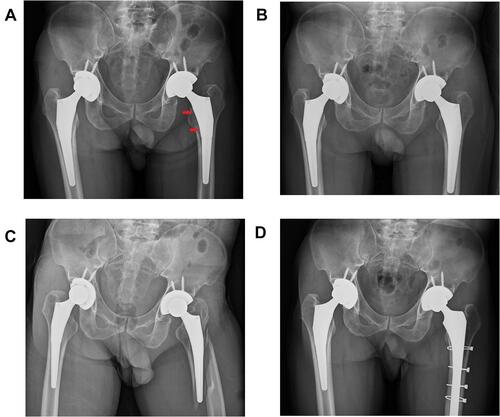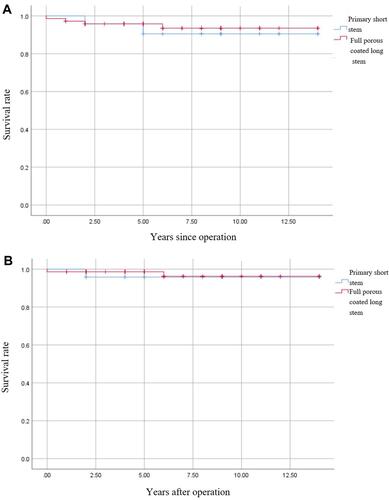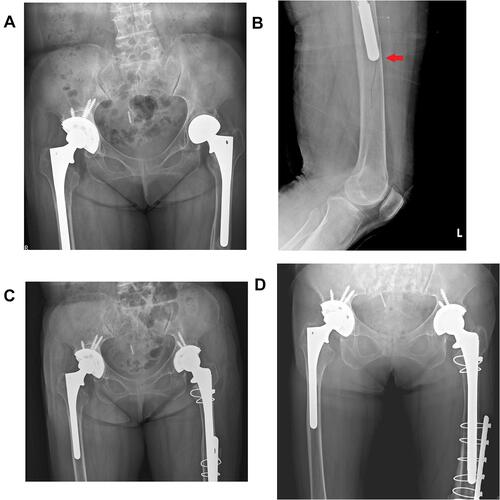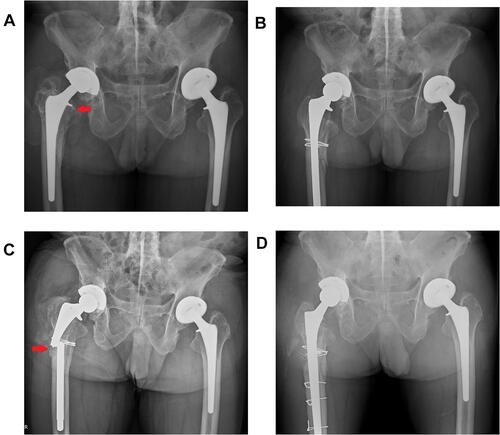Figures & data
Table 1 Patient Characteristics
Figure 1 Pelvis AP radiograph of 41-year-old patient suffered from stem loosening of primary THA, s/p periprosthetic fracture 2 years after the first RTHA with primary stem and receiving second RTHA. (A) Aseptic loosening of left femoral stem, the arrow shows the subsidence of stem and radiolucency around prosthesis before the first RTHA. (B) Immediate postoperative radiograph of the first RTHA using primary stem, which was ML taper stem from size 12.5mm changed to size 15mm. (C) Periprosthetic fracture (Vancouver type B2) occurred 2 years after the first RTHA surgery. (D) Second RTHA using cementless full-porous-coated long stem and multiple wiring fixation.

Figure 2 Kaplan-Meier survivorship curve compared between primary stem and full-porous-coated long stem groups. (A) Survivorship curve for radiographic change. (B) Survivorship curve for revision.

Table 2 Clinical Outcomes of Primary Stem and Revision Long Stem
Figure 3 Pelvis and femoral radiograph of 58-year-old patient suffered from stem loosening after primary THA, intraoperative tip fracture during RTHA, and revision with long stem combined additional ORIF. (A) Aseptic loosening of left femoral stem before RTHA surgery. (B) Intraoperative radiograph revealed periprosthetic femoral shaft split fracture over stem tip (red arrow). (C) Immediate ORIF was performed combined full-porous-coated long stem RTHA. (D) 5 years postoperative radiograph revealed stable prosthesis and fracture union.

Figure 4 Radiograph of 62-year-old patient suffered from long stem breakage 6 years after the first RTHA, which was revised with a new cementless full-porous-coated long stem. (A) Aseptic loosening of right femoral stem, the arrow shows the subsidence of stem and radiolucency around prosthesis with advanced osteolysis. (B) Immediate radiograph of RTHA using full-porous-coated long stem, collar fracture was repaired with cerclage wire. (C) Long stem breakage (red arrow) occurred 6 years after revision surgery. (D) Second RTHA using cementless full-porous-coated long stem with multiple wiring ORIF.

